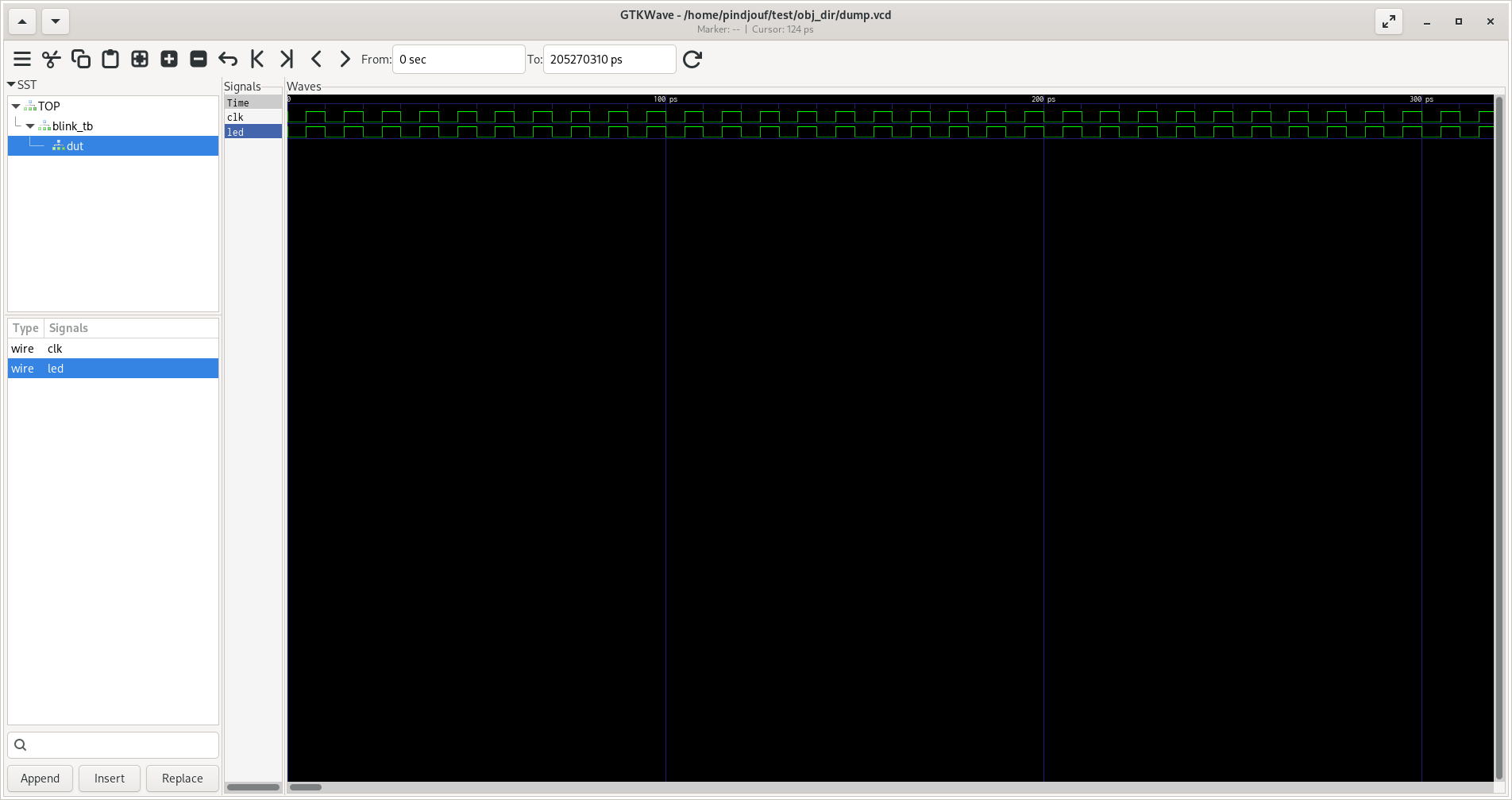Comfy HDL Design Setup
This is for those who want to get into coding in an HDL but don’t know where to start, as I was a few months ago.
- The language: systemVerilog
- The simulator: Verilator
- The visualizer: GTKWave
How to code - simulate - visualize?
Code
First step is to write your design.
Simple example:
module blink (
input clk,
output led
);
assign led = clk;
endmodule // blinkThen you write your testbench¹ to provide input to your DUT/UUT².
Simple example:
module blink_tb;
reg clk;
wire led;
blink dut (
.clk(clk),
.led(led)
);
initial clk = 0;
always #5 clk <= ~clk;
initial
begin
$display("Running testbench...");
$dumpfile("dump.vcd");
$dumpvars(0);
#30_000_000;
$display("Done: made file dump.vcd");
$finish;
end
endmodule // blink_tbSimulate
If we keep the same design and testbench as above you can use a command such as this one to compile your tb: verilator --trace --binary --build-jobs 0 -Wall blink_tb.sv -Wno-lint -timing -o cool
After that, go into the obj_dir and the run the executable.
If you added a dumpfile in your code it should now be in the same directory.
Visualize
- Go into GTKWave.
- Make new tab with your .vcd file.
- Select all your signals in the left column.
- Analyze and enjoy! :D

Glossary
- The function of a testbench is to apply stimulus (inputs) to the DUT/UUT, and report the outputs in a readable and user-friendly format.
- Device Under Test | Unit Under Test.